
5 things to know about Winnipeg’s big sewage problem
115 billion litres, 70 years to fix, $5.5 billion in lawsuits
Get the inside scoop on The Narwhal’s environment and climate reporting by signing up for our free newsletter.
In the back of a small, zero-waste bulk goods store in central Winnipeg, a hand-crafted steel contraption could signal hope for a local solution to plastic waste.
It’s simple: a motor fastened to a metal frame connects to a wide-toothed shredder encased in a steel hopper. Its job is to tear up shampoo bottles, pill bottles, juice jugs, takeout containers and any other plastic it’s fed, spitting it out as small, colourful flakes.
It’s the first piece of what Marisa Loreno and Helga Jakobson, co-founders of Redo Waste, hope will become a full-fledged, grassroots plastic recycling initiative to chip away at one of the planet’s most pervasive pollutants.
“Plastic is literally everywhere,” Jakobson says. “It’s a massive problem — and an abundant resource.”
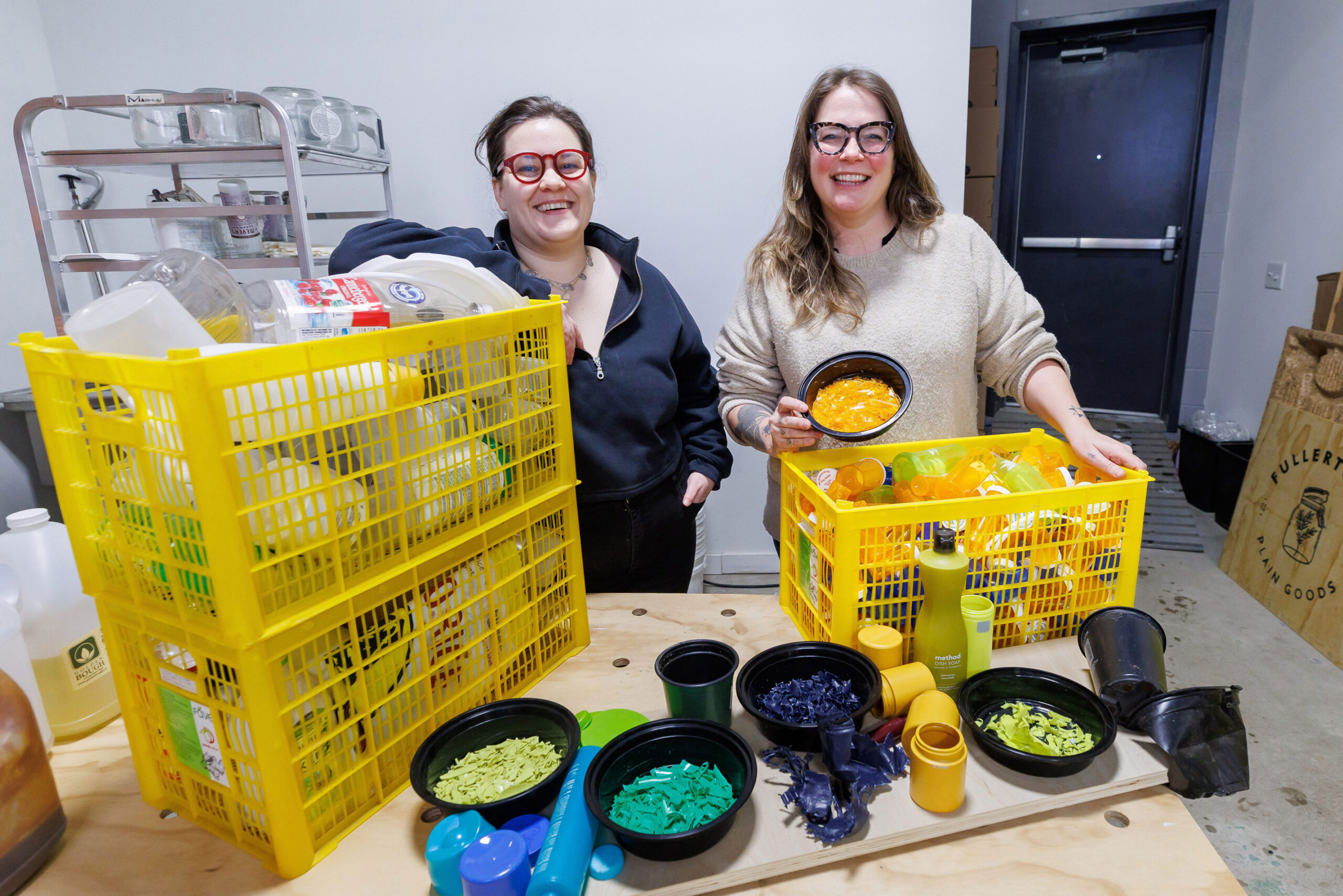
Recent research estimates humans, on average, ingest a credit card worth of microscopic plastic bits every week. These micro plastics have been found in drinking water, lakes, rivers and oceans. Studies show plastic containers are leaching toxic chemicals into food, drinks, cosmetics and clothing. The risks to human health are still not fully understood.
Yet plastic waste keeps piling up. More than six million tonnes of plastic were generated for Canadian use in 2019 while nearly four million tonnes were thrown away. Only nine per cent is recycled, according to federal data.
The average Canadian throws away more than 100 kilograms of plastic per year — the equivalent weight of a kitchen oven.
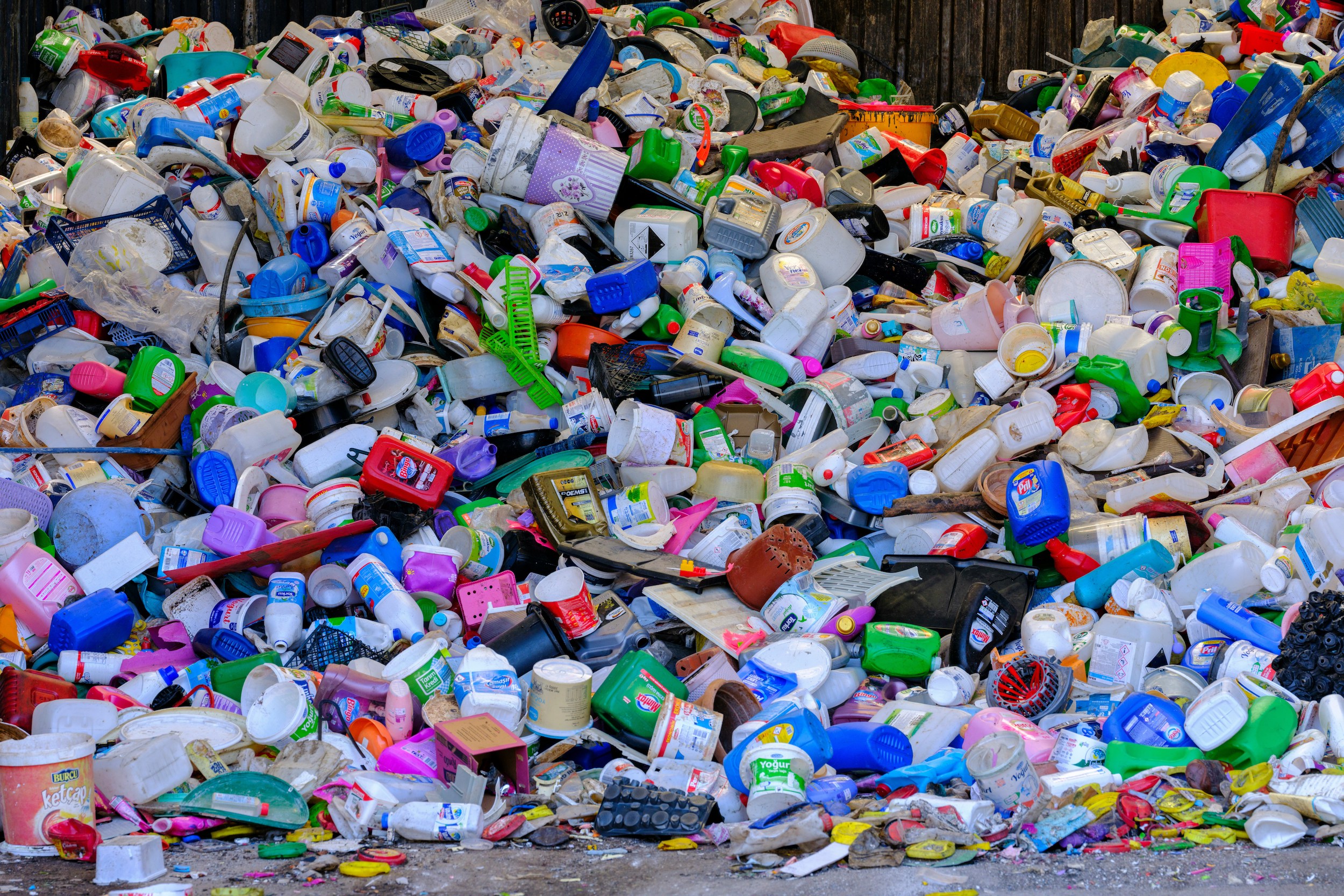
Recent bans on certain single-use plastics like grocery bags and cutlery were aimed at curbing Canada’s plastic waste. In 2022, the United Nations Environment Programme began work on global policies to end plastic pollution by 2040. But plastic doesn’t just appear in the usual forms like containers and toys, it is also a component in everything from car parts to house paint to puffy jackets and pillows.
For the everyday consumer, recycling is one of the few options to cut back on plastic waste — but there are still unanswered questions about the efficacy of plastic recycling.
A 2024 study by the Centre for Climate Integrity concluded plastic recycling is a “fraud,” owing to the complexity of the material and the “virtually hopeless” economics of selling recycled products.
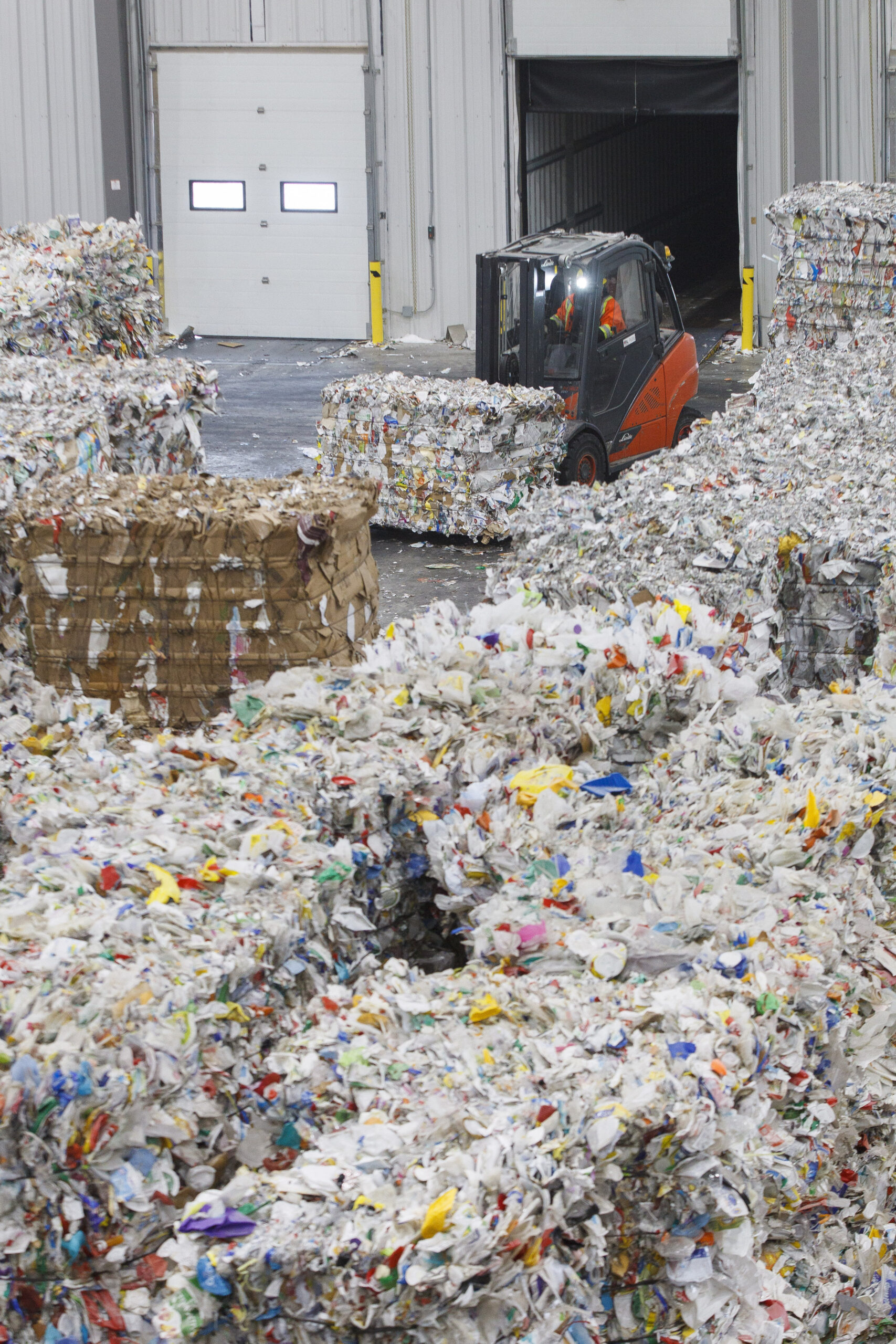
“Plastics have a linear rather than circular lifespan — when viable, recycling provides only a brief delay on their inevitable journey to landfills, incinerators or the environment,” the report found.
But Loreno, Jakobson and Winnipeg’s municipal recycling program leaders remain hopeful a more sustainable, circular plastic economy is possible with the right education and tighter regulations.
Despite the dismal waste statistics, Canadians are eager recyclers. Recycling programs — typically managed at the municipal level — became widespread through the 1990s. By the mid-aughts, 93 per cent of households had access to a recycling program. Of those, Statistics Canada found 97 per cent made use of the programs.
In Manitoba, 95 per cent of residents have access to residential recycling programs and the vast majority (93 per cent) use them.
But recycling is a multi-faceted and complicated service; not all municipalities collect and process the same materials in the same ways. Plastic — a fossil-fuel based material that comes in thousands of variations, each with its own chemical composition and unique characteristics — is notoriously challenging to recycle.
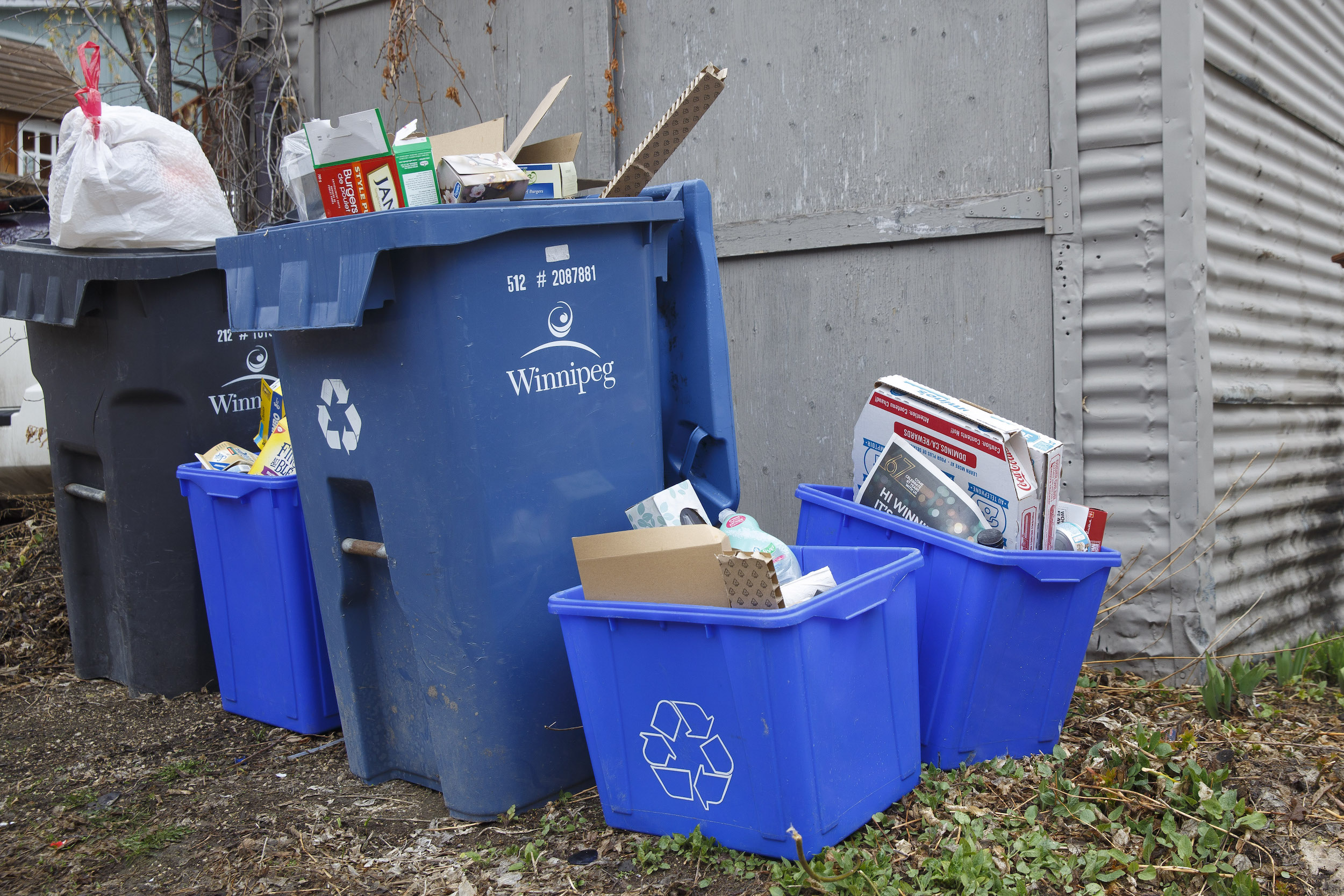
Different recycling programs collect different numbered plastics. These numbers, called resin identification codes, help identify what type of plastic a container is made of. No.1 plastics, or polyethylene terephthalate (PET), are commonly used for water and pop bottles while No. 2 plastic, high-density polyethylene (HDPE), is found in milk jugs, detergent containers and shampoo bottles. These, along with No. 5 polypropylene (PP), which is used for most takeout containers, are the easiest to recycle. But thin film plastics used for bread bags, dense vinyl plastics used for pipes or commercial cling wrap, mixed plastics and the kinds of plastic used for styrofoam, toys and other packaging materials can be very difficult to repurpose.
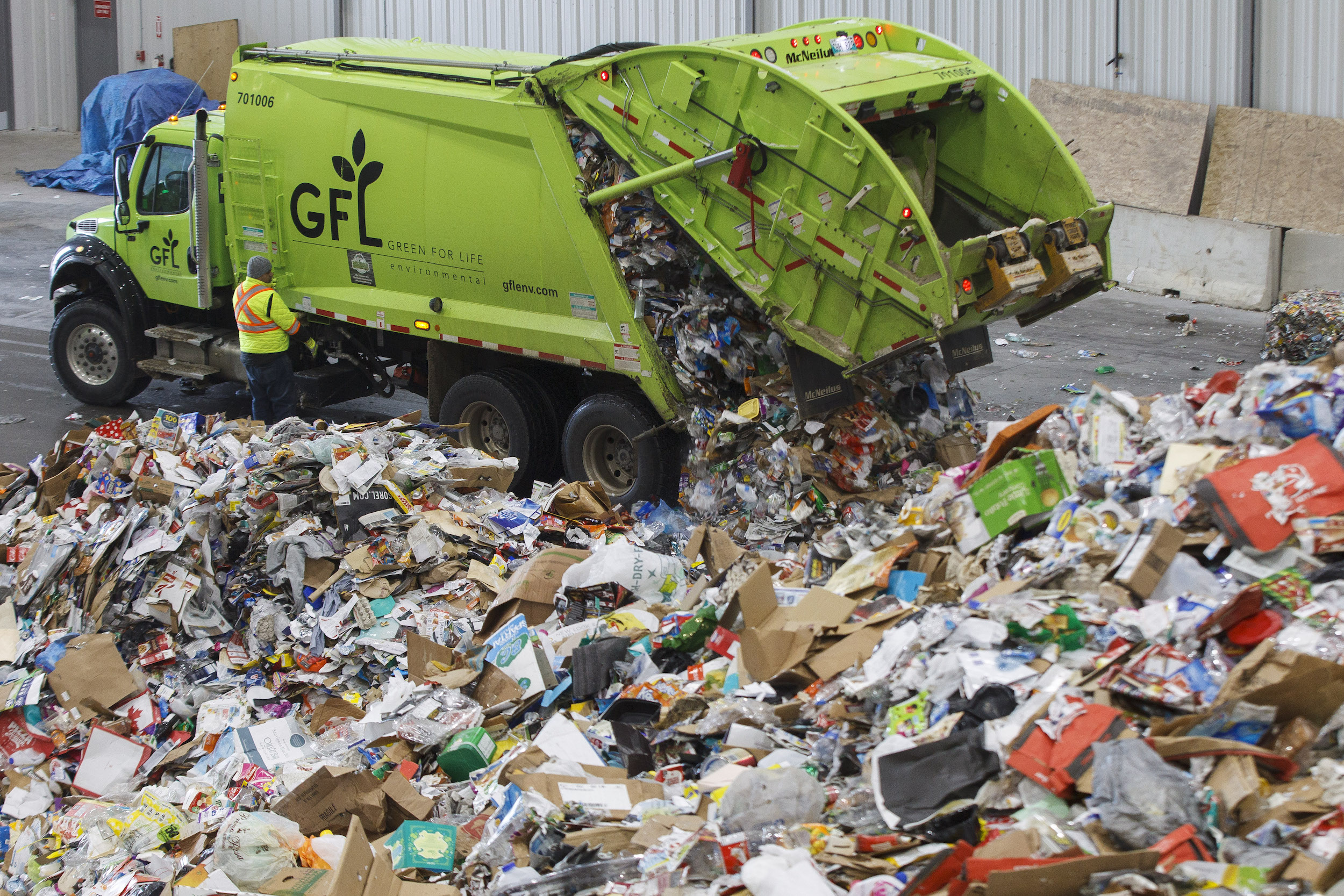
The confusing landscape of plastic recycling coupled with the immense volume produced each year prompted Jakobson and Loreno to get curious about the possibility of home-grown plastic recycling. When the pair teamed up to launch Redo Waste, Loreno had already opened Refill Market, the zero-waste bulk shop, while Jakobson had finished a term as executive director of an arts non-profit focused on collecting and distributing reusable materials.
Their respective communities, Jakobson says, were “looking for solutions to plastic problems.”
“Nobody wants to be creating the waste that they’re creating,” she says.
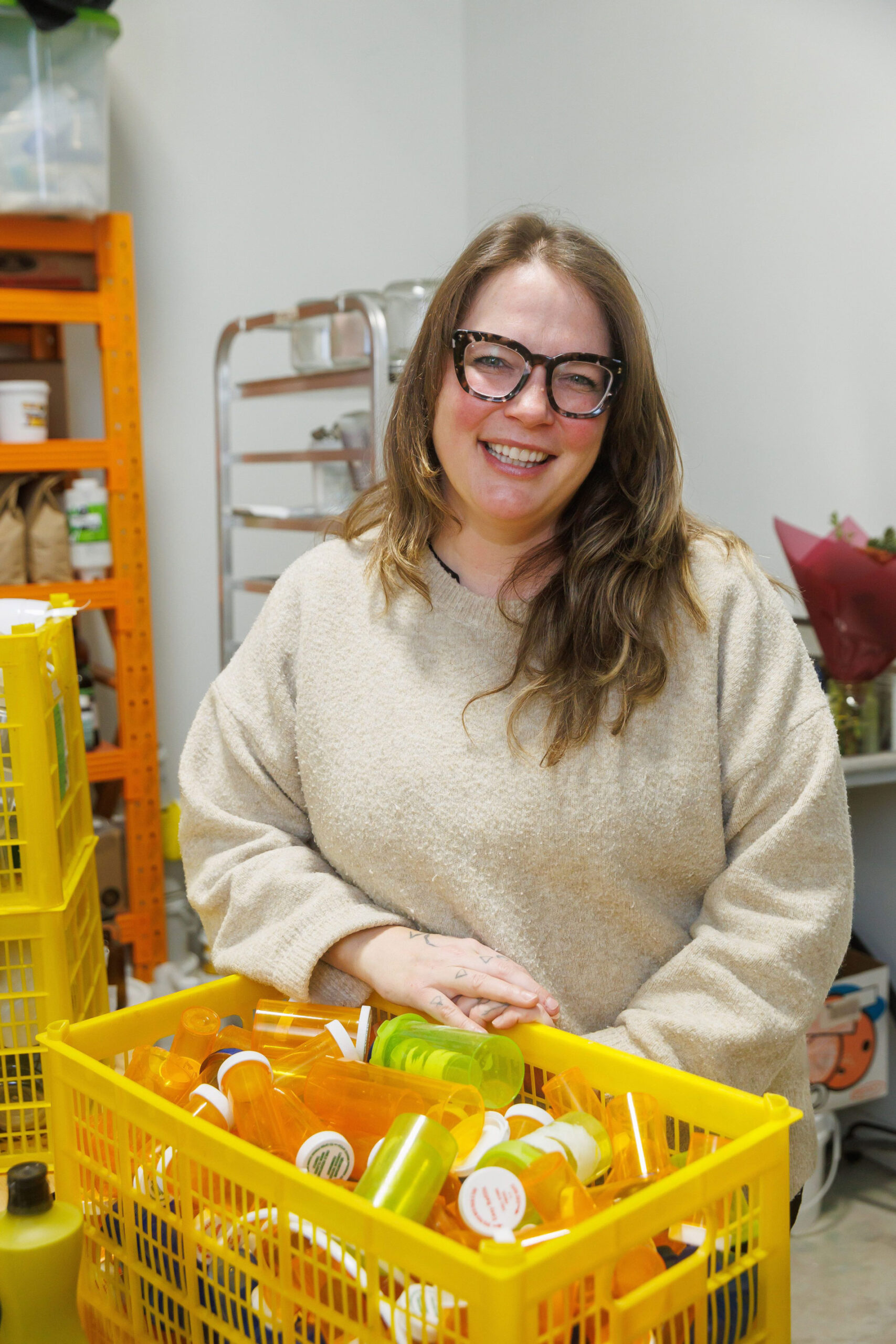
“They don’t want to be the last stop for the waste that is created in the process of living,” Loreno adds. “They want to learn how to clean up after the system at large.”
The pair started working toward a one-stop solution that can collect, process and re-manufacture plastic goods. They connected with a global grassroots recycling network, where they found resources to design, build and operate the equipment they would need, then found a mechanically inclined friend who could build a “bespoke” plastic shredder.
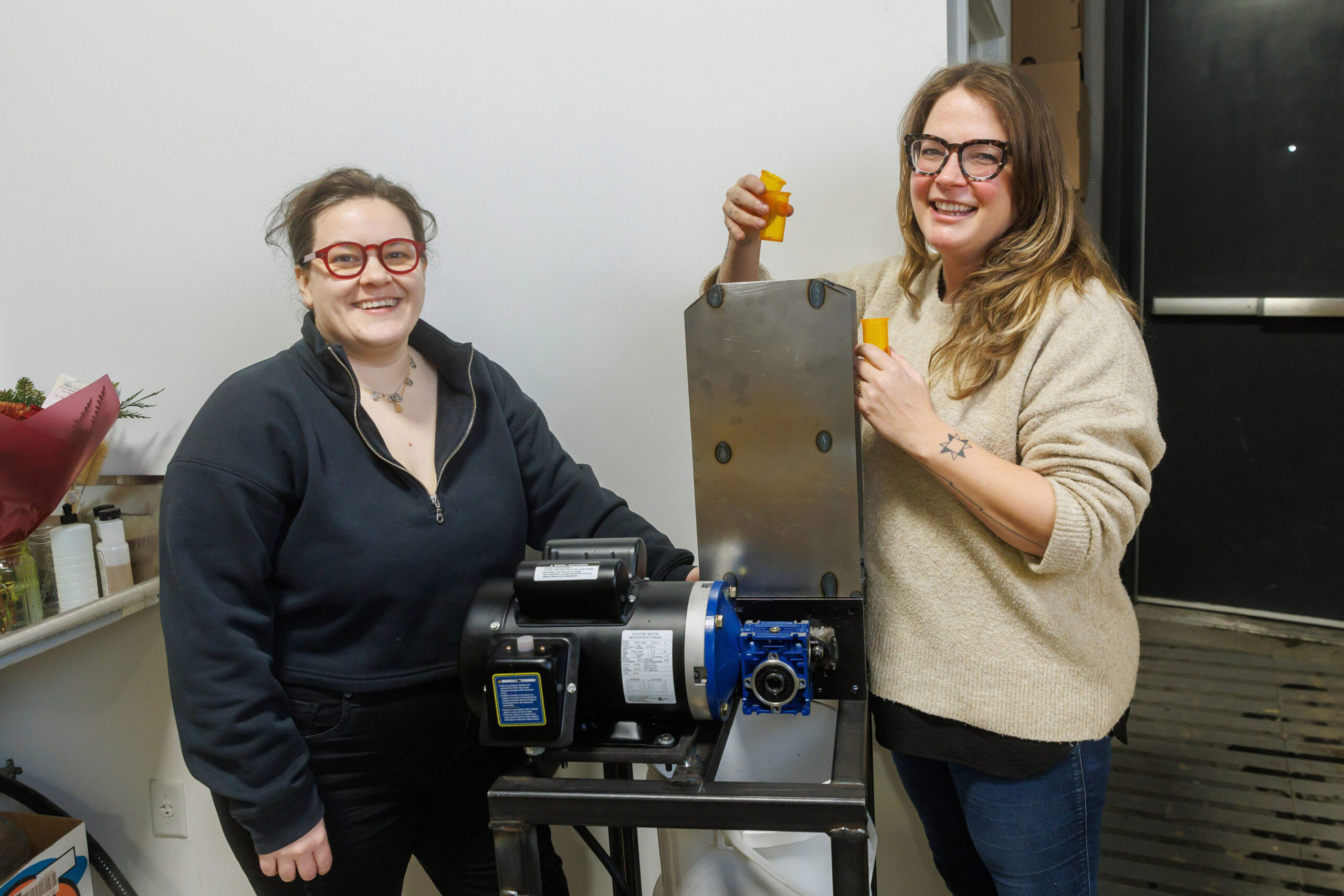
“We’re dreaming really big with it,” Jakobson says. “We’re focusing on sequestering the largest amount of plastics possible and creating plastic ‘lumber’ out of it.”
In their research, Jakobson and Loreno have noticed there’s a lack of publicly accessible information about the nuances of plastic recycling — how it works, its limitations and the best practices to reduce waste. They aim to help share information about the recycling process in hopes of inspiring more grassroots initiatives.
“There are a lot of people who want … to consume in a more ethical way, and because of the barriers that systems put in place, people aren’t able to make more informed choices,” Jakobson says.
“The responsibility should not be on folks who are just trying to get through life with a very high cost of living, dealing with the materials that are available to them.”
This summer, Redo Waste issued a public call for just one item — empty pill bottles — which they collect and disassemble at Loreno’s storefront. The lids, suction seals and bottles themselves are each made of a separate plastic and need to be processed separately.
The materials are then fed to the shredder, which quickly reduces them to a handful of plastic flakes.
Once they have the right equipment, Redo Waste will melt and press the flakes into construction materials like two-by-fours and plywood-style sheets they hope can be used in applications like outdoor furniture and decking. In the meantime, Jakobson has been experimenting at home with “a heat gun and a little panini press” to understand how each plastic can be reshaped.
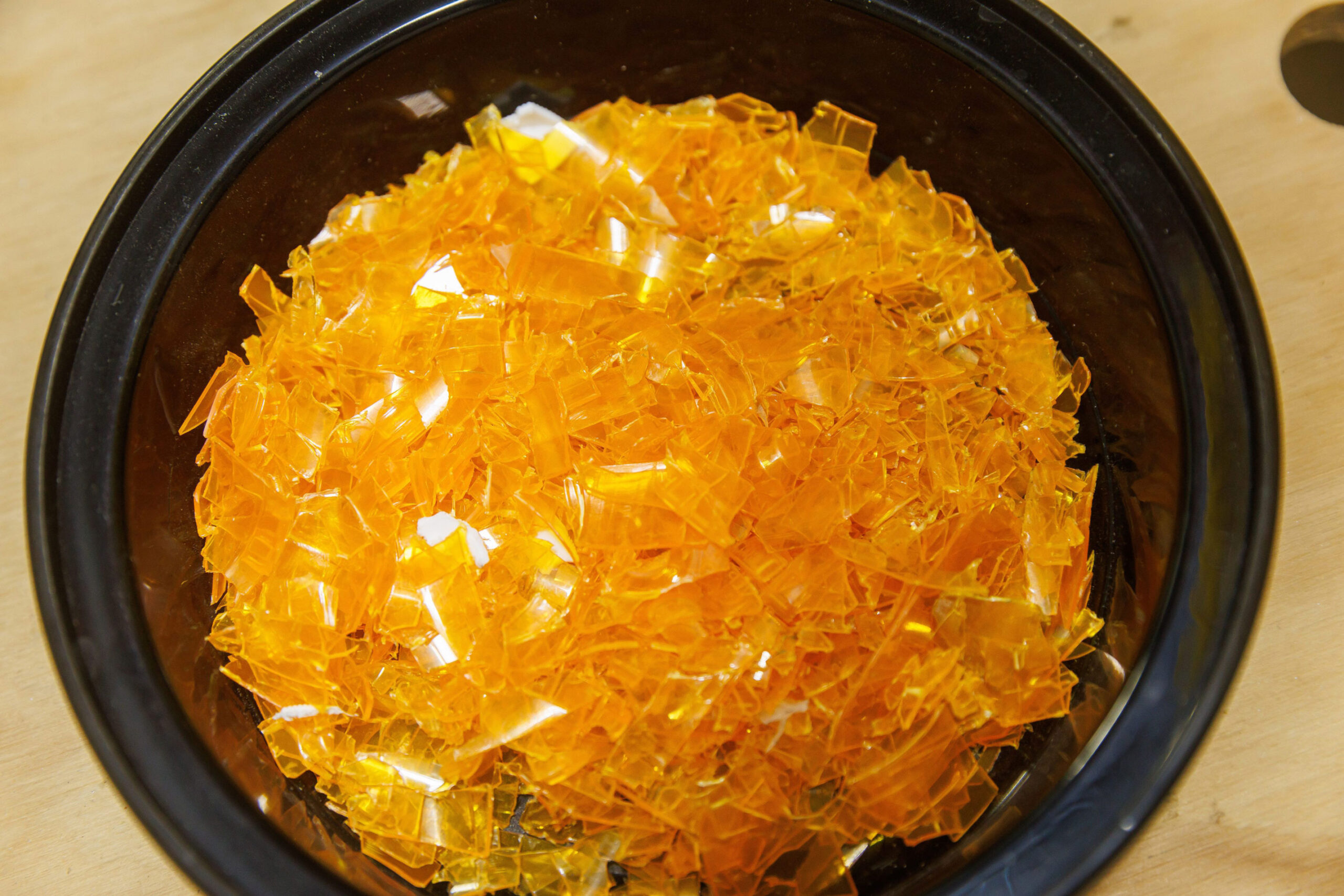
Redo’s initiative is considered “mechanical recycling,” a term for the physical processes like sorting, washing, grinding and shredding used to break plastics down into smaller parts and repurpose them into new items.
But the exact methods for processing and re-shaping vary widely. The brittle plastic used for pill containers, Jakobson says as an example, flakes and melts easily but does not reach a pourable liquid state, while thicker, gummier bottles have been difficult to break down in the shredder.
Some plastics can’t be processed mechanically at all, leading the plastic industry (in effect the oil industry) to develop “advanced” or “chemical” recycling techniques that break plastic down to their components usually through extreme heat exposure or chemical solvents.
According to the Centre for Climate Integrity, less than 15 per cent of plastics processed with these methods are used to manufacture new products. The rest is used as fuel or turned into waste.
Jakobson and Loreno can afford to be selective with what they collect as they build up their recycling infrastructure. But at a municipal scale, developing the right equipment to handle thousands of different types of plastic in vast quantities is far too expensive an investment.
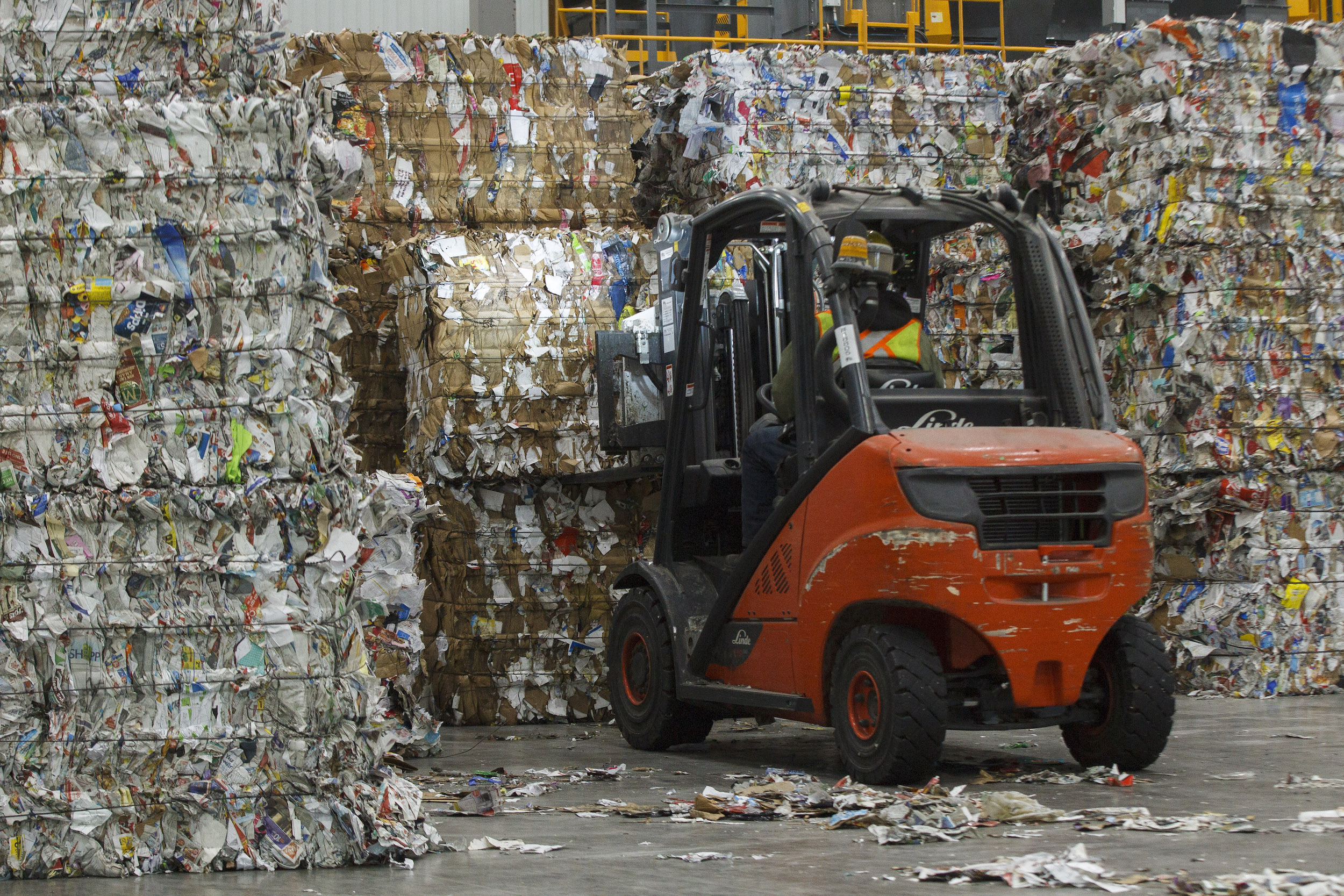
Winnipeg, like many Canadian cities, instead exports its blue-binned plastics to intermediary recyclers that process the material into small pellets, which are then sold to manufacturers.
Winnipeg’s superintendent of waste diversion, Mark Kinsley, says that system has created a perception of municipal recycling systems that send plastic bottles straight to the dump, or to landfills overseas.
“We wouldn’t be doing all this if it was off the street and into the landfill,” Kinsley says. “It’s a total misconception.”
In the bowels of a nondescript warehouse in Winnipeg’s St. Boniface industrial park, a maze of sophisticated machinery (including a robot trained to snatch four-litre milk jugs off a conveyor belt) and a complement of staff are in place to ensure at least some of the city’s plastic is transformed into new products.
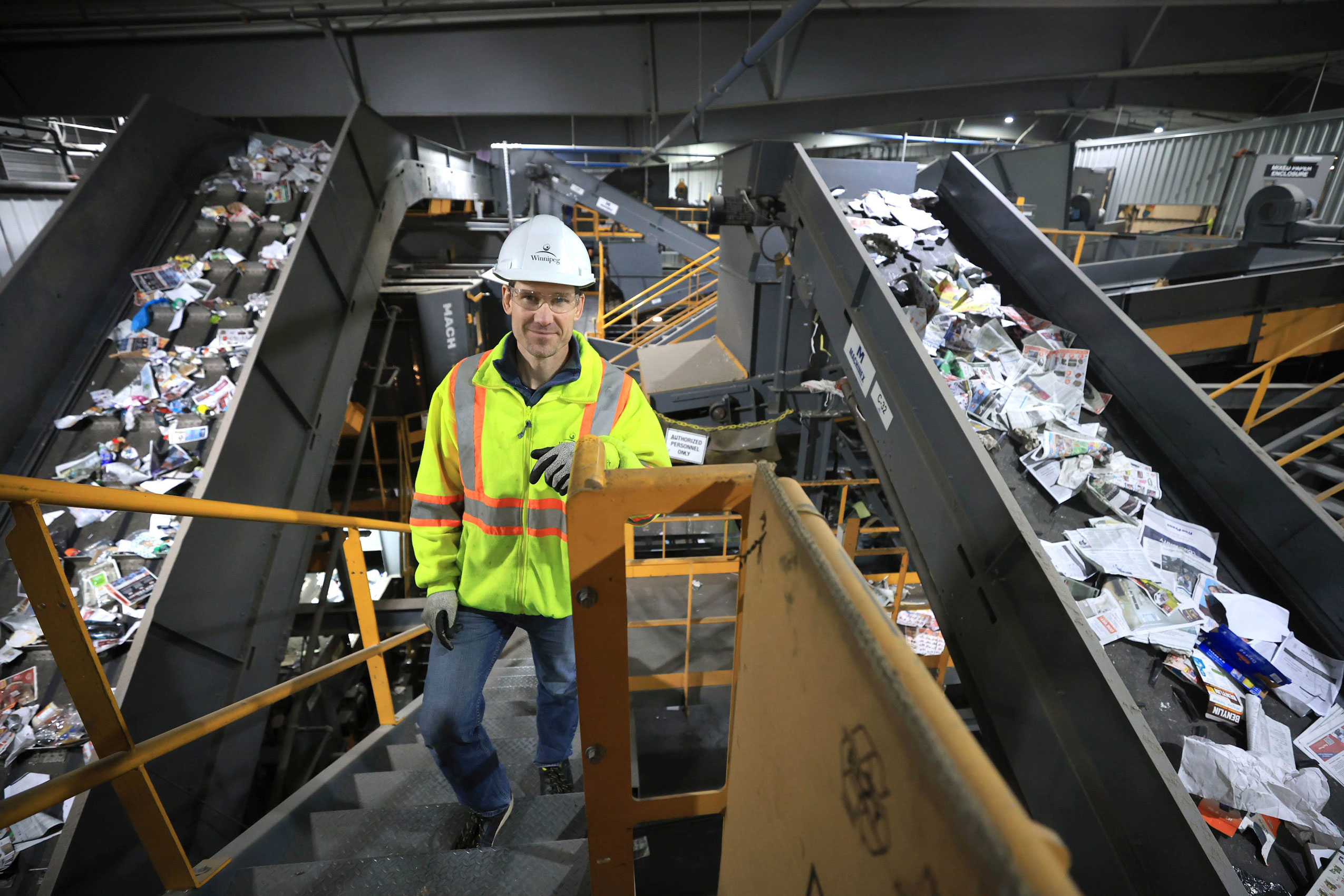
Blue-bin items are collected and trucked to the warehouse, called the material recovery facility, then tipped into a massive pile of cardboard boxes, shredded paper, pop cans, plastic bottles — and inevitably, a bit of garbage. The upcoming holiday season is their busiest time of year, but the warehouse can hold about four days worth of recycled goods at a time, Kinsley says.
These materials are scooped onto a conveyor belt and workers begin pulling out material the system can’t process like scrap metal, clothing and plastic bags — about 17 per cent of Winnipeg’s blue-bin items end up sorted to the landfill, Kinsley says.
The rest moves through a series of human- and machine-sorting stations: large rotating teeth separate the big cardboard boxes, then infrared beams scan the line, triggering puffs of air that separate newsprint and other paper, while metal cans are pulled out with magnets.
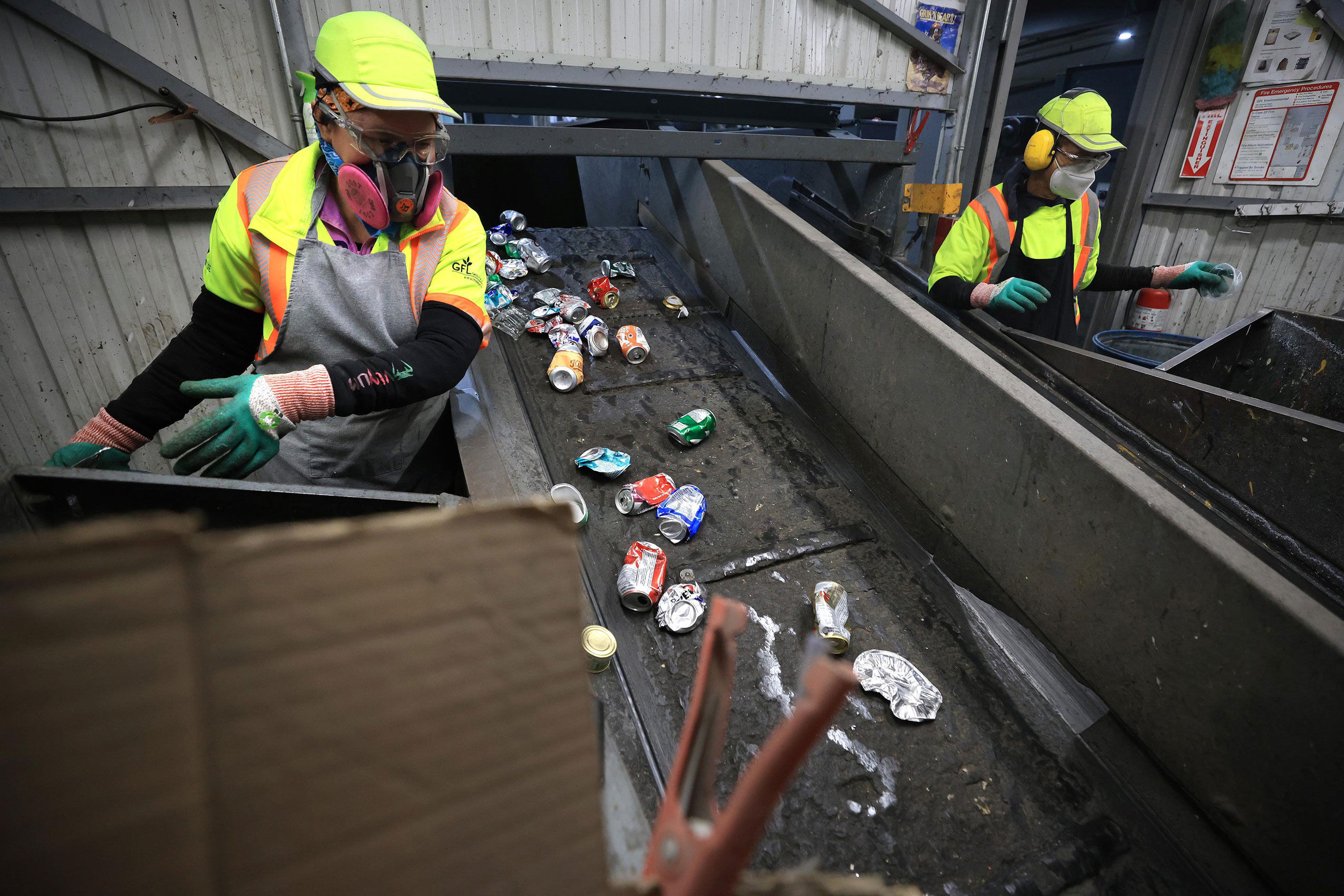
Plastic items are sorted using a similar infrared beam and air-jet system. The light beam is programmed to detect certain polymers and trigger a flash of air to fire the material onto a separate belt.
Winnipeg accepts most numbered plastic containers in its single-stream blue-bin program. The series of laser beams and air jets help separate light, rigid plastics like water bottles from denser, flexible plastics like peanut butter tubs (both are labeled as No. 1 plastics).
Some materials, like milk jugs, are collected separately — in this case by a robot programmed to detect the containers, catch them with a suction arm and drop them onto a separate conveyor line.
At the end of the process, materials are compressed into bales and later sold to recyclers, predominantly in the United States and southern Ontario (only glass and steel cans are processed within the province).
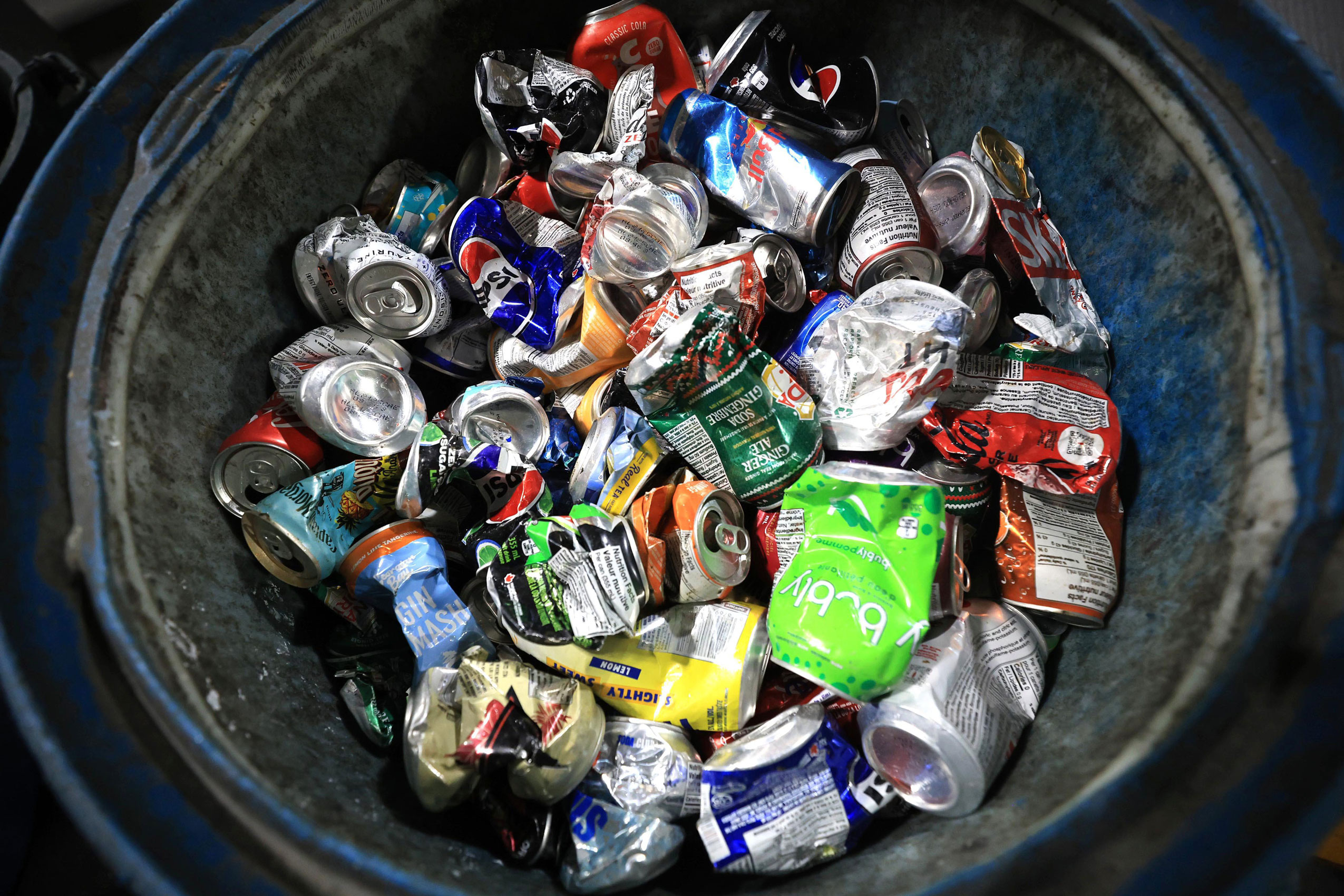
Kinsley winces at the federal statistic that just nine per cent of plastic is recycled. That grim figure, he explains, refers to all plastic, including industrial, medical and commercial. Medical plastic is not often recycled due to biohazard risks. Industrial and commercial consumers have been slow to build momentum with plastic recycling.
“There’s only so many types of plastic that are acceptable,” Kinsley says. “You’re talking about your regular stuff: food, beverage and cleaning product containers.”
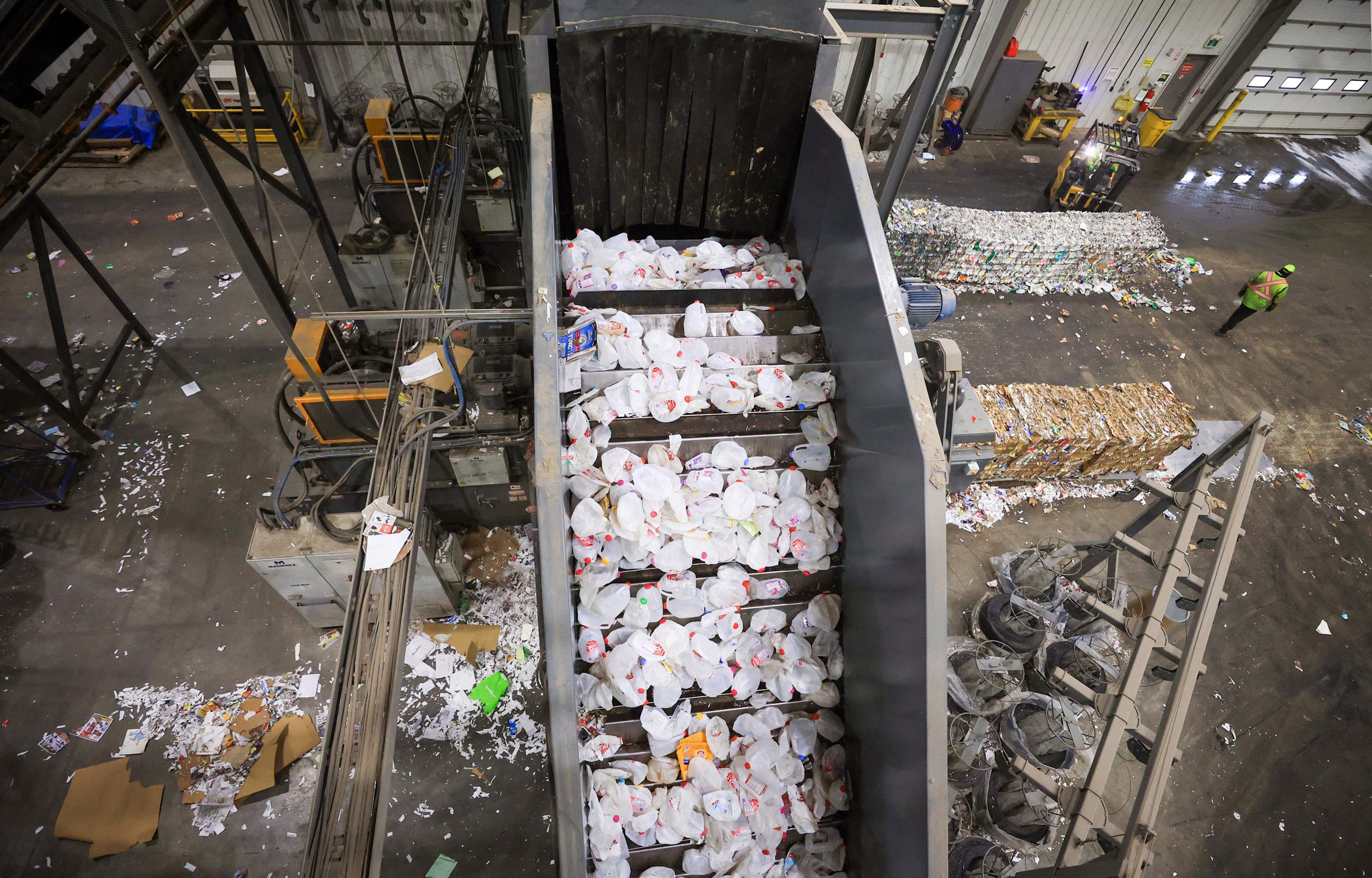
This single-use plastic packaging accounts for about 40 per cent of plastic produced for Canadian use. In the 1950s, the petrochemical industry made a deliberate effort to transform the public perception of plastic from a material “too valuable to throw away” to a disposable, expendable substance — and it worked.
Of the recyclable plastic dropped in Winnipeg’s blue bins, Kinsley says, 85 per cent are shipped to recyclers.
“The best thing to do is get it back to its original [producer],” he says. “Companies are trying to add more post-consumer material. It’s a slow process, but I honestly believe it’s moving in the right direction.”
But after materials leave municipal sorting facilities, the realities of plastic recycling get a little blurry.
Kinsley explains the mechanical recyclers the city exports to sort, wash, grind and shred materials, then separate plastics from labels, paper scraps and other contaminants in float tanks — the plastic sinks while the detritus floats. The material is then melted and formed into pellets which can be sold back to manufacturers.
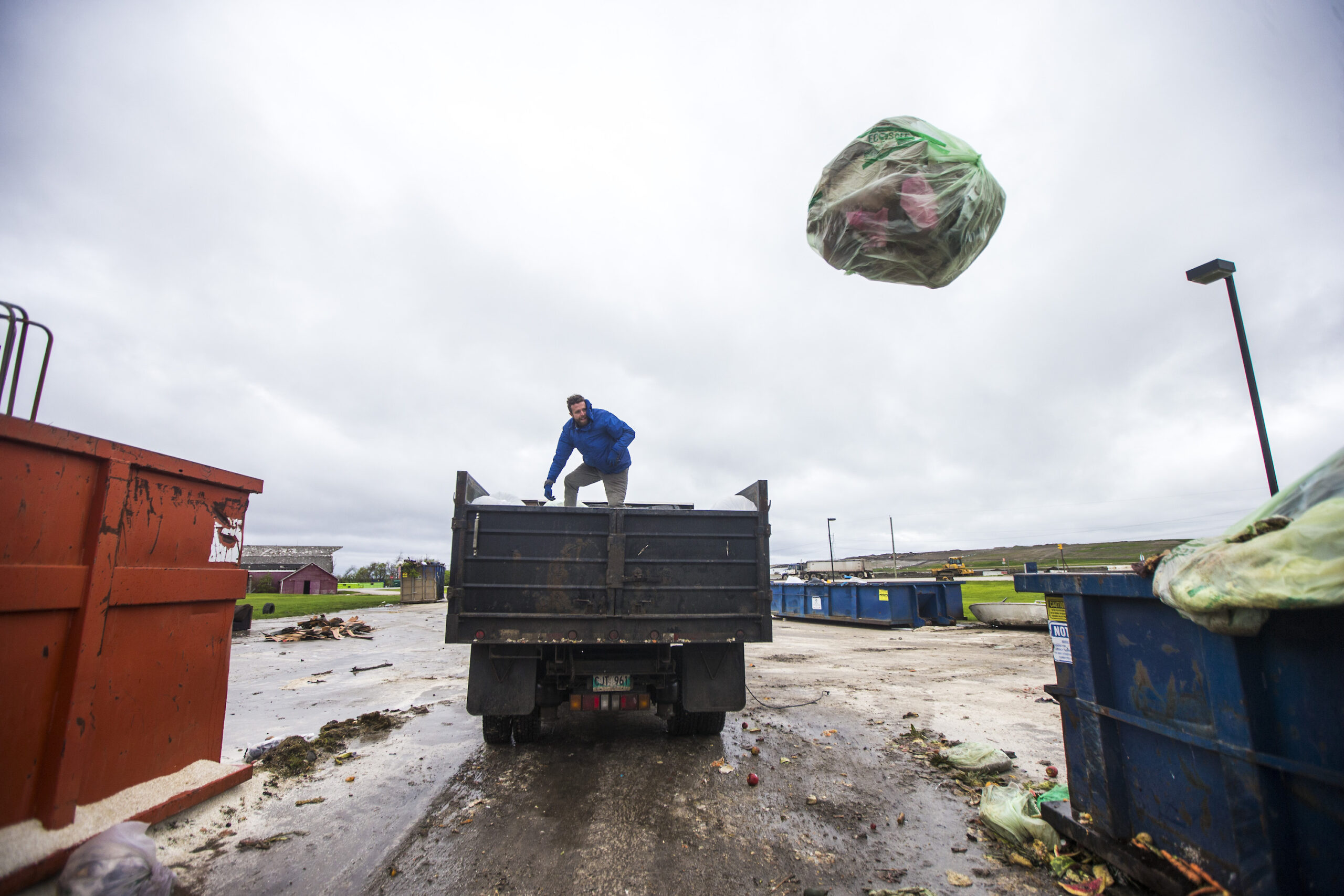
“Several studies confirm the majority of properly recycled plastics are effectively recycled back into new products and packaging,” Kara Pochiro, vice president of communications for the Association of Plastic Recyclers, said in an email. The association represents plastic processing facilities across the United States — where much of Canada’s plastic is sent.
Pochiro cited a study from the Massachusetts Institute of Technology (MIT) which she said “found nearly 85 [per cent] of recovered PET bottles were recycled.” Of an estimated 3 million tons of PET bottle waste generated in the United States, the study finds approximately 860,000 tons are collected through recycling programs. Just under 30 per cent of those collected materials are used to make new bottles and 55 per cent is used to make plastic fibre, film and sheeting material.
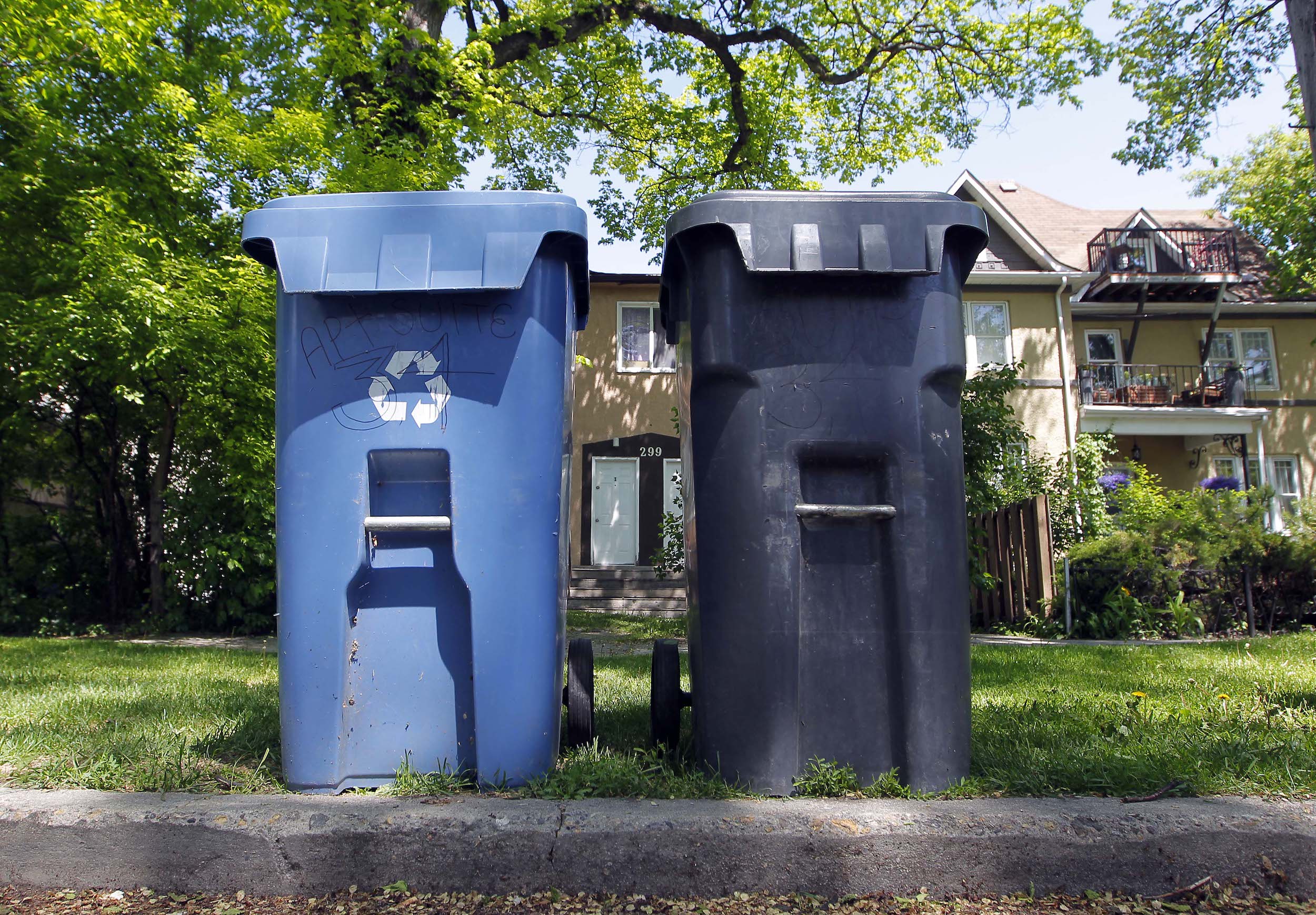
According to the Centre for Climate Integrity, what makes plastic recycling ineffective is a lack of end markets for the recycled material.
“Certain types of plastics have no end markets (i.e., businesses that buy and use recyclable materials to make new products), and therefore are impossible to recycle,” the report says, noting only no. 1 and 2 plastics have viable end markets.
Even for plastic that does have an end market, the report notes the industry has known for decades the economics were “virtually hopeless” — because of the price of oil and complexity of recycling, new plastic is far cheaper and easier to use for manufacturing.
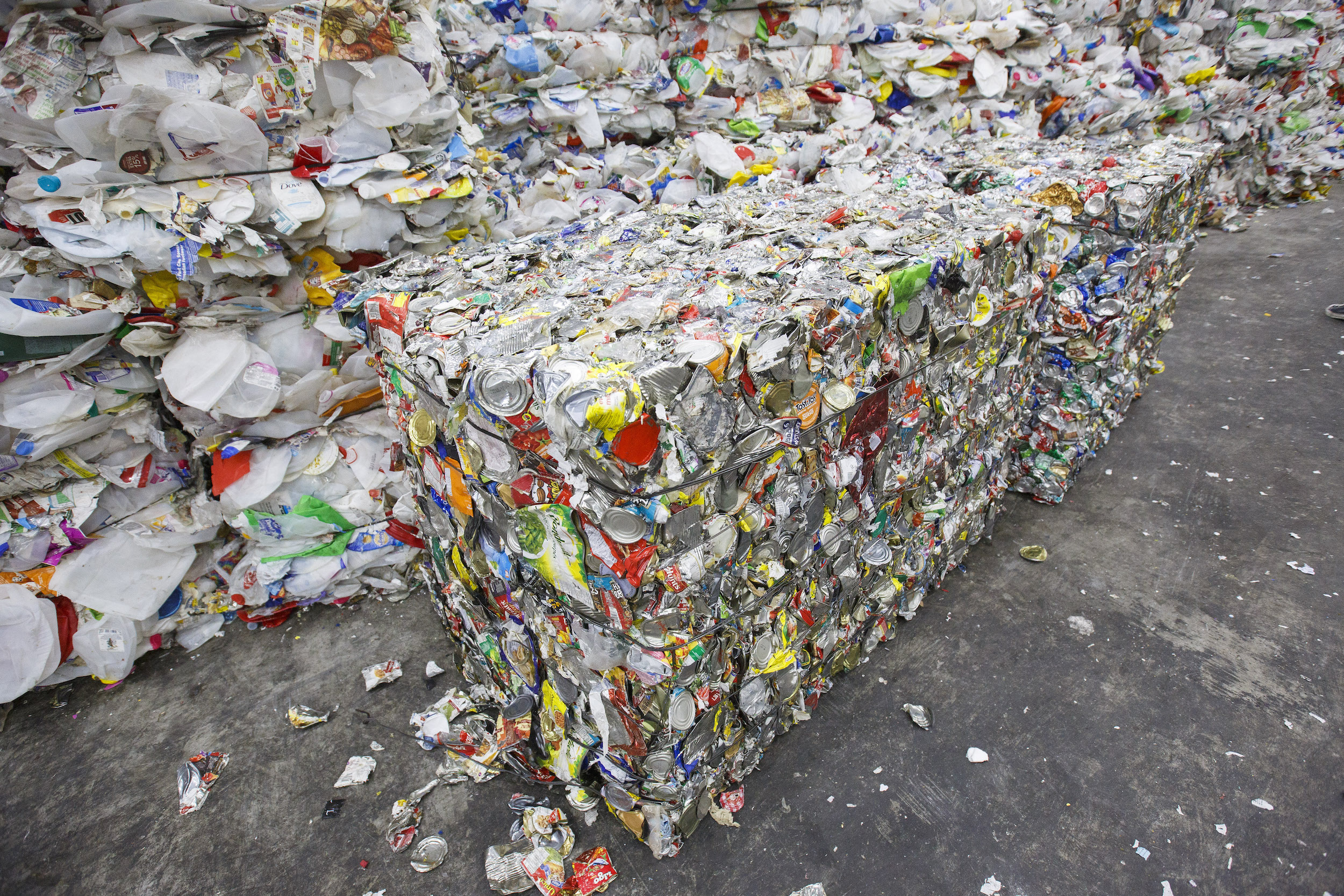
But every time regulators have raised concerns about waste and threatened restrictions or bans on single-use plastics (which have been under consideration since the 1980s), the industry responded by opening research centres, sending trade and lobby groups to battle restrictive legislation and launching public campaigns to promote plastics.
The National Association for PET Container Resources, for example, was established in 1987 to promote plastic packaging and encourage states to develop plastic recycling pilot programs.
This year, the association sponsored TikTok users to create posts promoting PET plastic with misleading data about the material’s recyclability.
The United Nations, meanwhile, aimed to reach an agreement on measures to reduce plastic pollution by the end of this year, but negotiations stalled this month after the plastic industry sent a record number of lobbyists to oppose limits on plastic production.
Back at Redo Waste, Loreno says the responsibility should lie with regulators to limit plastic manufacturing and encourage the use of recycled material.
The association of plastic recyclers agrees.
“The truth is that recycling has never had adequate, sustained funding, and it has been left for local governments to manage,” Pochiro said in an email. “This strategy has resulted in an inequitable, largely inefficient system. Robust state and national policies are needed to invest in recycling collection, processing and remanufacturing into new products.”
The federal government plans to introduce recycled material quotas in plastic goods by 2030 in an effort to create more market demand for recycled plastic, and would remove the recycling symbol from plastic items unless at least 80 per cent of Canadians have access to recycling programs that accept that item.
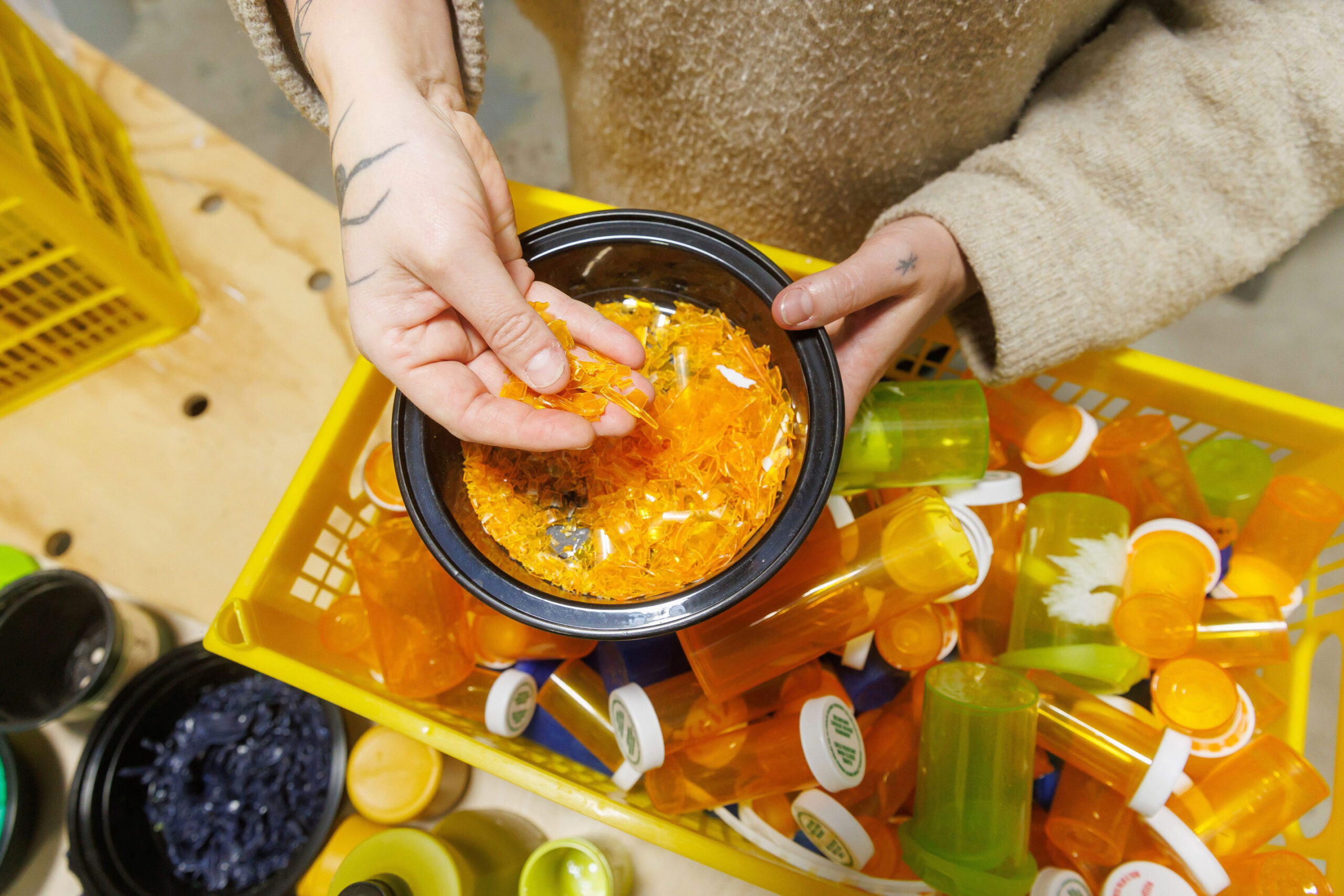
But Jakobson and Loreno say manufacturers are likely to continue pushing back on more restrictive regulations. In the meantime, grassroots efforts like Redo’s in-house recycling program and community education about the realities of recycling can help fill the gaps. With such an “abundance of material,” Jakobson says, the opportunities to re-purpose plastic are endless.
“There should be a Redo on every corner,” she says. “Everyone should be able to do this if they want to — and profit. Our system is here, it’s grassroots, and that’s where we’re strongest.”
Julia-Simone Rutgers is a reporter covering environmental issues in Manitoba. Her position is part of a partnership between The Narwhal and the Winnipeg Free Press.
Get the inside scoop on The Narwhal’s environment and climate reporting by signing up for our free newsletter. On a warm September evening nearly 15...
Continue reading
115 billion litres, 70 years to fix, $5.5 billion in lawsuits

Climate change, geopolitics and business opportunities power a blue economy

10 billion litres of sewage are dumped into Winnipeg’s lakes and rivers each year. Some...
